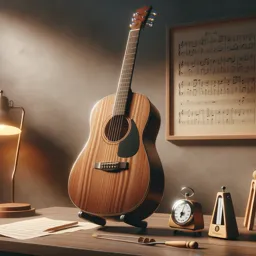Introduction
If you’ve polished your technique and built a strong foundation in classical guitar, you may be searching for new challenges. Venturing into advanced repertoire is one of the most rewarding paths for classical guitarists, both musically and artistically. In this article, we explore how to select and approach advanced pieces, interpret them, and elevate your musicianship to new heights.
Selecting Advanced Repertoire
The world of classical guitar boasts a rich selection of advanced pieces from composers such as Johann Sebastian Bach, Francisco Tárrega, Heitor Villa-Lobos, and Joaquín Rodrigo. Focus on choosing repertoire that challenges your technical limits without overwhelming your current abilities. Balancing technical studies, etudes, and masterworks can help foster well-rounded growth.
Techniques in Advanced Pieces
Advanced repertoire demands more than just nimble fingers. Expect to encounter intricate polyphony, rapid arpeggios, extended techniques such as tremolo, harmonics, and percussive effects, and complex rhythms. Approaching these challenges requires methodical practice, slow tempo rehearsals, and occasionally breaking down passages or voices for targeted improvement.
Interpreting with Musicality
Mastery at an advanced level goes beyond playing the notes accurately. Interpretation becomes key—focus on dynamics, phrasing, articulation, and emotional expression. Listen to recordings by revered performers, analyze score markings, and experiment with your own voice to create an authentic performance.
Tips for Effective Practice
- Segment Practice: Divide your practice into technique, slow tempo runs, and full speed performance.
- Score Analysis: Study notations and structure for insight into the composer’s intent.
- Mental Practice: Visualize fingerings and musical lines away from the instrument.
- Record Yourself: Listening back helps identify improvements and enhances interpretive choices.
Conclusion
Exploring advanced classical guitar repertoire offers immense satisfaction and growth as a musician. With a thoughtful approach to selection, diligent technical practice, and an ear for artistic interpretation, you can unlock new layers of creativity and performance ability on your instrument.

























